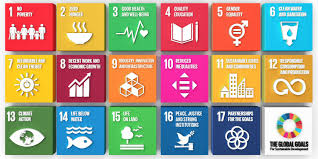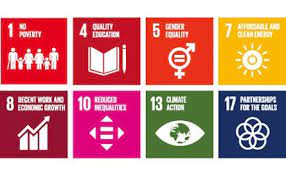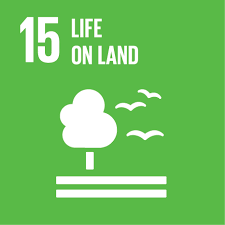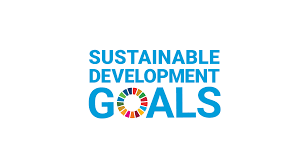The Importance of Sustainable Development Goals
Sustainable Development Goals (SDGs) are a universal call to action to end poverty, protect the planet, and ensure prosperity for all. Adopted by all United Nations Member States in 2015, the 17 SDGs set forth a comprehensive framework to address pressing global challenges.
Key Aspects of Sustainable Development Goals
Eradicating Poverty: One of the primary goals of the SDGs is to end poverty in all its forms everywhere. This involves ensuring access to basic resources such as food, water, healthcare, and education for all individuals.
Promoting Quality Education: SDG 4 focuses on providing inclusive and equitable quality education for all. Education is seen as a fundamental human right and a key driver of sustainable development.
Ensuring Environmental Sustainability: Several SDGs are dedicated to protecting the planet and its resources. This includes goals related to clean water and sanitation, affordable and clean energy, sustainable cities and communities, responsible consumption and production, climate action, life below water, and life on land.
The Role of Businesses in Achieving SDGs
Businesses play a crucial role in advancing sustainable development goals. By integrating sustainability practices into their operations, businesses can contribute to poverty reduction, environmental conservation, social equity, and economic growth.
Many companies are aligning their strategies with the SDGs to drive innovation, create shared value for stakeholders, and mitigate risks associated with climate change and resource scarcity.
The Path Forward
Achieving the Sustainable Development Goals requires collective action from governments, businesses, civil society organizations, and individuals worldwide. Collaboration across sectors is essential to address complex challenges such as climate change, inequality, hunger, and lack of access to healthcare.
By raising awareness about the importance of sustainable development goals and taking concrete steps to implement them in our daily lives and work environments, we can create a more equitable and sustainable future for current and future generations.
7 Key Benefits of Sustainable Development Goals: Building a Better Future for All
- Addresses global challenges comprehensively
- Promotes environmental conservation and sustainable resource management
- Fosters social equity and inclusivity
- Encourages innovation and creativity in problem-solving
- Strengthens partnerships and collaboration among diverse stakeholders
- Empowers marginalized communities and promotes human rights
- Sets clear targets and indicators for measuring progress
Challenges Facing Sustainable Development Goals: Complexity, Cost, and Inequality
Addresses global challenges comprehensively
Sustainable Development Goals (SDGs) address global challenges comprehensively by providing a universal framework that targets a wide range of interconnected issues such as poverty, inequality, climate change, environmental degradation, and lack of access to education and healthcare. By taking a holistic approach to development, the SDGs recognize the complex and interdependent nature of these challenges and offer a roadmap for countries and organizations to work together towards sustainable solutions that benefit people and the planet as a whole.
Promotes environmental conservation and sustainable resource management
Sustainable Development Goals promote environmental conservation and sustainable resource management by emphasizing the importance of preserving our planet’s natural resources for future generations. By integrating practices that reduce waste, promote renewable energy sources, and protect biodiversity, SDGs encourage a holistic approach to addressing environmental challenges. Through these efforts, we can work towards creating a more sustainable and resilient environment that supports both human well-being and the health of the planet.
Fosters social equity and inclusivity
Sustainable Development Goals play a vital role in fostering social equity and inclusivity by addressing systemic inequalities and promoting equal access to resources and opportunities for all individuals, regardless of their background or circumstances. By focusing on creating a more inclusive society, SDGs aim to reduce disparities in income, education, healthcare, and other essential services, ultimately contributing to a more just and equitable world where everyone has the chance to thrive.
Encourages innovation and creativity in problem-solving
Sustainable Development Goals (SDGs) encourage innovation and creativity in problem-solving by fostering a mindset that seeks new, sustainable solutions to complex global challenges. By setting clear objectives and targets related to environmental conservation, social equity, and economic development, the SDGs inspire individuals, organizations, and governments to think outside the box and develop innovative approaches that benefit both people and the planet. This emphasis on creativity not only drives progress towards achieving the goals but also spurs advancements in technology, business practices, and policy-making that can lead to long-term positive impacts on society and the environment.
Strengthens partnerships and collaboration among diverse stakeholders
Sustainable Development Goals serve as a catalyst for strengthening partnerships and collaboration among diverse stakeholders. By providing a common framework and shared objectives, SDGs encourage governments, businesses, non-profit organizations, and communities to work together towards common goals. This collaborative approach fosters innovation, knowledge-sharing, and collective action to address complex global challenges effectively. Through partnerships built on trust and mutual respect, stakeholders can leverage their unique strengths and resources to drive sustainable development initiatives that benefit society as a whole.
Empowers marginalized communities and promotes human rights
Sustainable Development Goals empower marginalized communities by promoting human rights and ensuring inclusivity in global development efforts. By addressing issues such as poverty, inequality, and discrimination, SDGs aim to create a more equitable world where all individuals have access to basic necessities, opportunities for growth, and a voice in decision-making processes. Through targeted initiatives that prioritize the rights and well-being of marginalized populations, sustainable development goals help foster social justice, diversity, and empowerment for those who have historically been marginalized or overlooked.
Sets clear targets and indicators for measuring progress
Sustainable Development Goals offer a significant advantage by establishing clear targets and indicators for measuring progress. By defining specific objectives and providing measurable metrics, SDGs enable organizations, governments, and individuals to track their efforts effectively. This structured approach not only helps in monitoring advancements but also facilitates accountability and transparency in the pursuit of sustainable development. Clear targets and indicators ensure that actions taken align with the overarching goals, driving meaningful impact and fostering a collective commitment to creating a more sustainable future for all.
Complexity
One significant con of Sustainable Development Goals is the complexity involved in implementing and monitoring 17 interconnected objectives. For countries and organizations, this complexity can pose a challenge, potentially leading to confusion and inefficiencies in efforts to achieve the SDGs. The interrelated nature of the goals requires a comprehensive approach that may strain resources and coordination efforts, making it difficult to track progress effectively and allocate resources efficiently.
Cost
One significant con of sustainable development goals is the cost involved in achieving the ambitious targets set by the SDGs. Implementing sustainable practices and initiatives to meet these goals may require substantial financial investments, which can pose a financial burden on governments, businesses, and individuals alike. The need for funding for infrastructure development, renewable energy projects, environmental conservation efforts, and social welfare programs to support sustainable development initiatives can be a challenge for many stakeholders. Balancing the financial costs with the long-term benefits of achieving sustainability objectives remains a complex issue that requires careful planning and resource allocation.
Inequality
Inequality: Despite the focus on inclusivity, there is a risk that certain groups or regions may be left behind in the pursuit of sustainable development goals, exacerbating existing inequalities. While the SDGs aim to promote equality and ensure no one is left behind, the reality is that marginalized communities, including indigenous populations, people with disabilities, and those living in remote areas, may face barriers to accessing resources and opportunities needed to achieve sustainable development. Addressing this con of sustainable development goals requires targeted interventions and policies that prioritize the needs of vulnerable populations to ensure that progress towards sustainability is truly inclusive and equitable.





